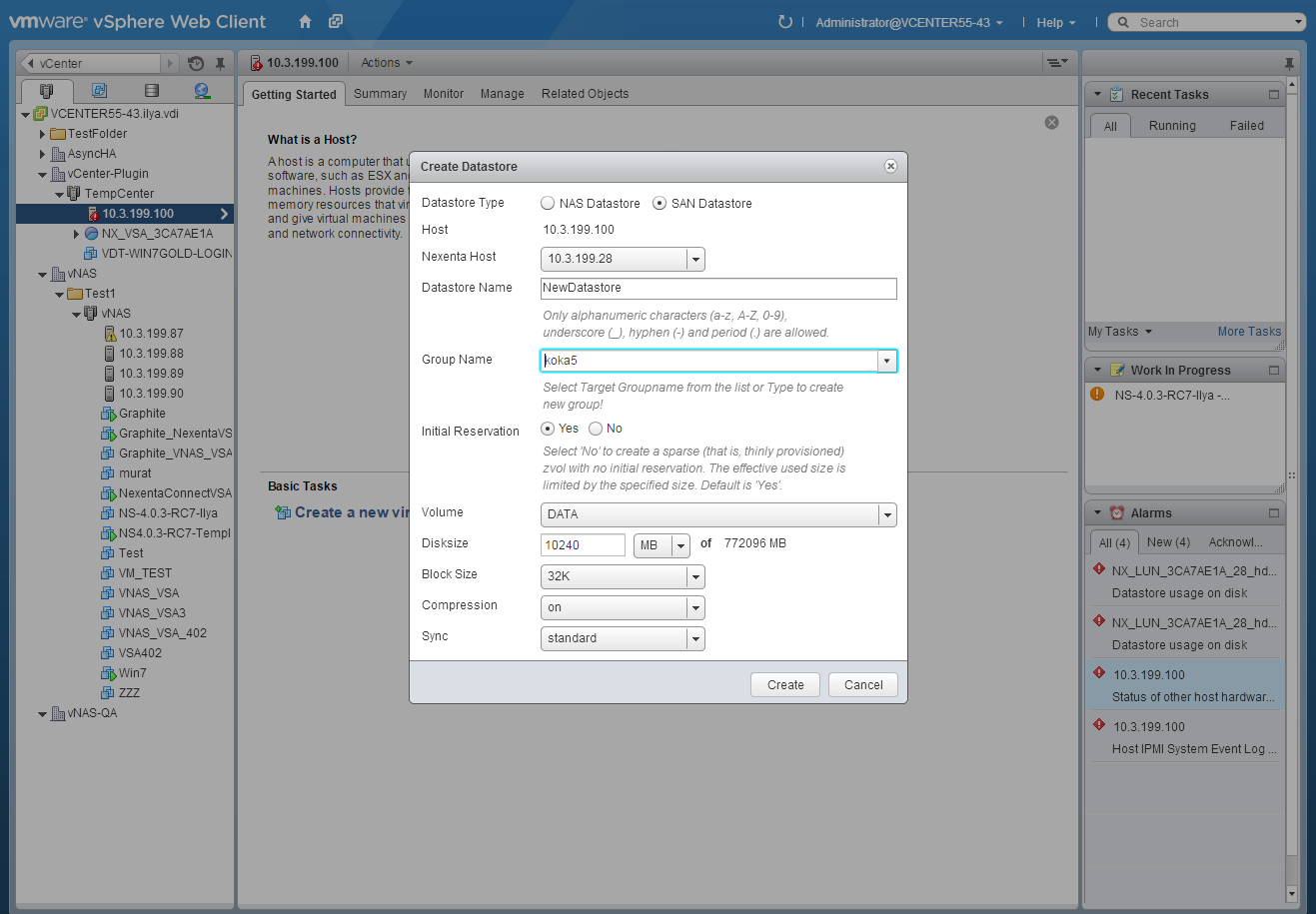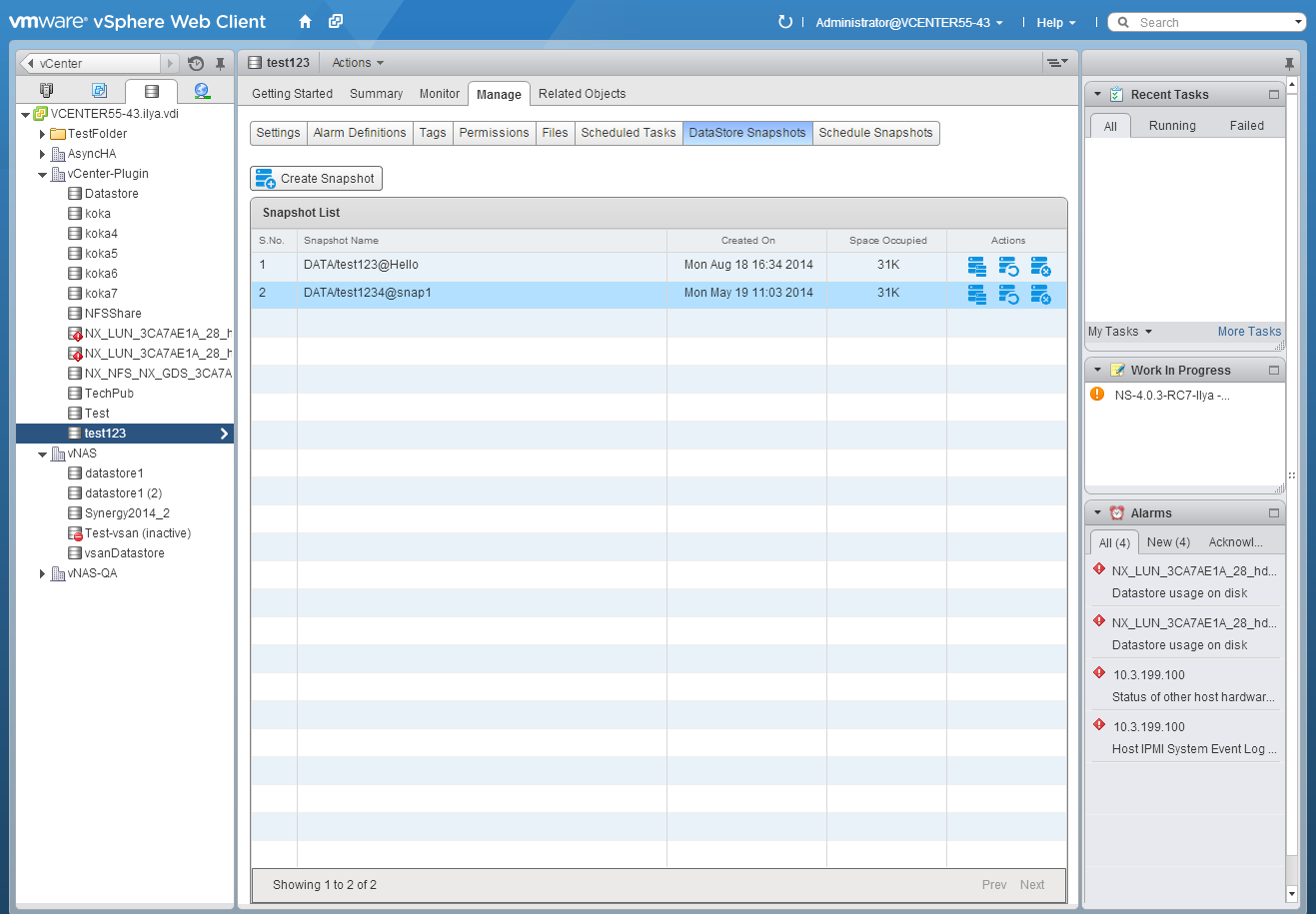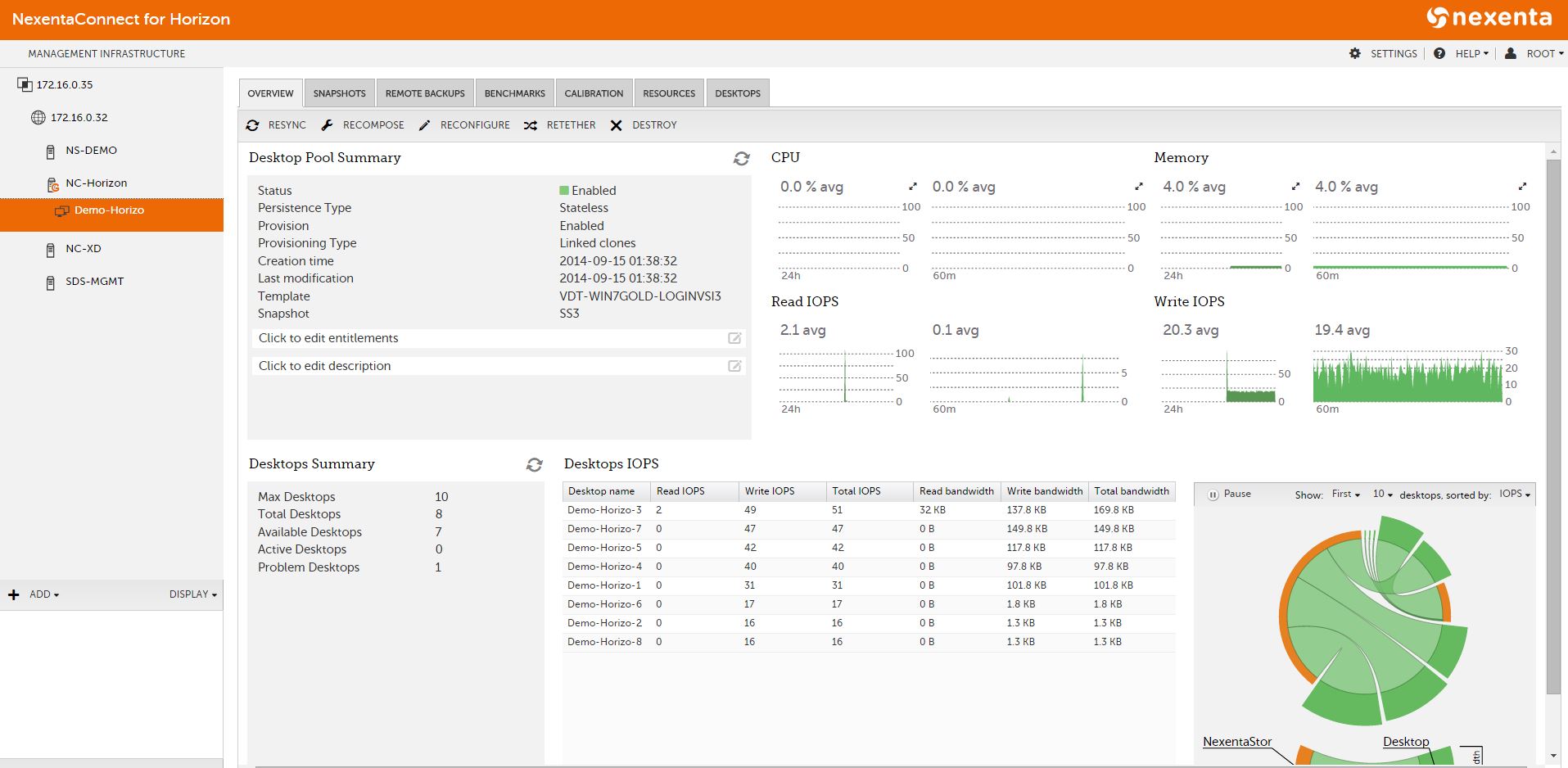Check out our video “Deploying NexentaStor as a Virtual Storage Appliance“.
Today’s modern datacenter has a combination of compute, storage and networking options. This includes an ever-growing use of hyperconverged and block only storage systems. These systems are great for running virtual machines, but users and applications still require file services to conduct daily business. Deploying a file services solution for NFS or SMB connections can be a labor intensive and expensive proposition; to combat that, Nexenta provides a quick and easy way for administrators to add file services to their existing virtual infrastructure. One of the many deployment models of the NexentaStor solution is as a virtual storage appliance (VSA). To make this even simpler and faster for our end users, we have packaged NexentaStor as an OVF appliance. The NexentaStor OVF is installed directly from a single URL for the OVF:
https://prodpkg.nexenta.com/nstor/5.2.1.8/addons/NexentaStorVSA.ovf
[Read more…] about File Services for HCI and Block Storage Simplified



